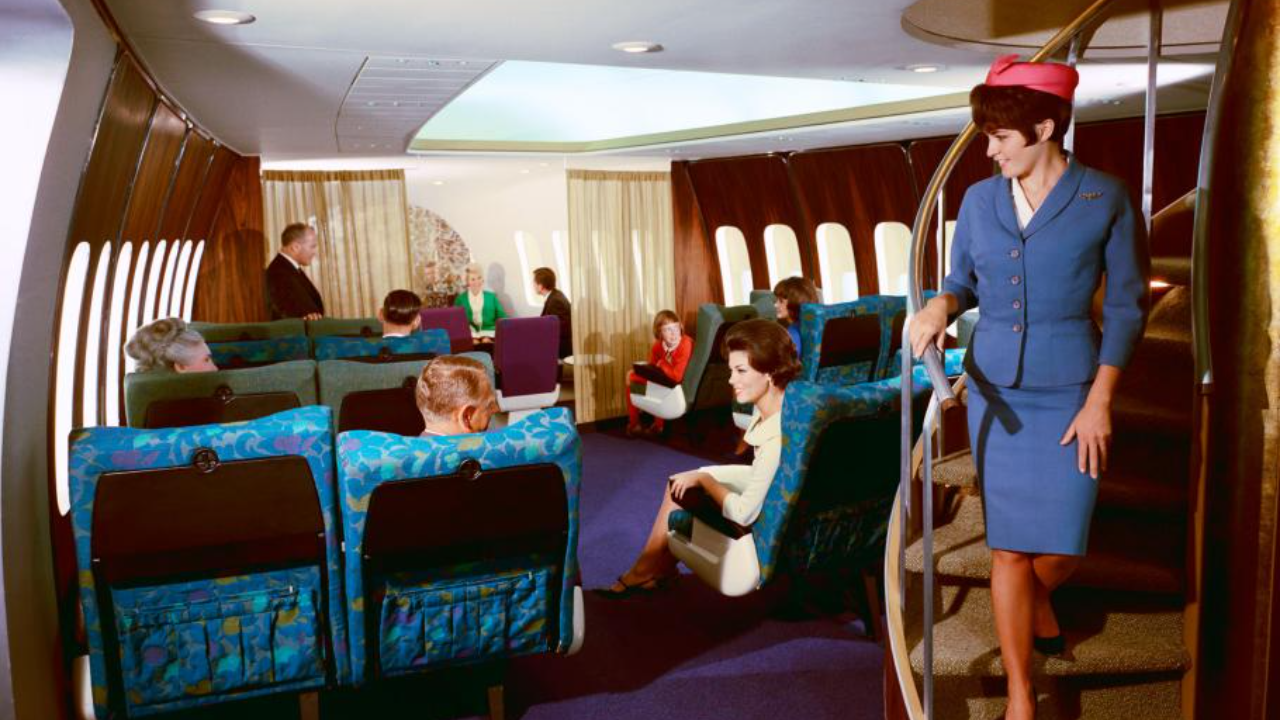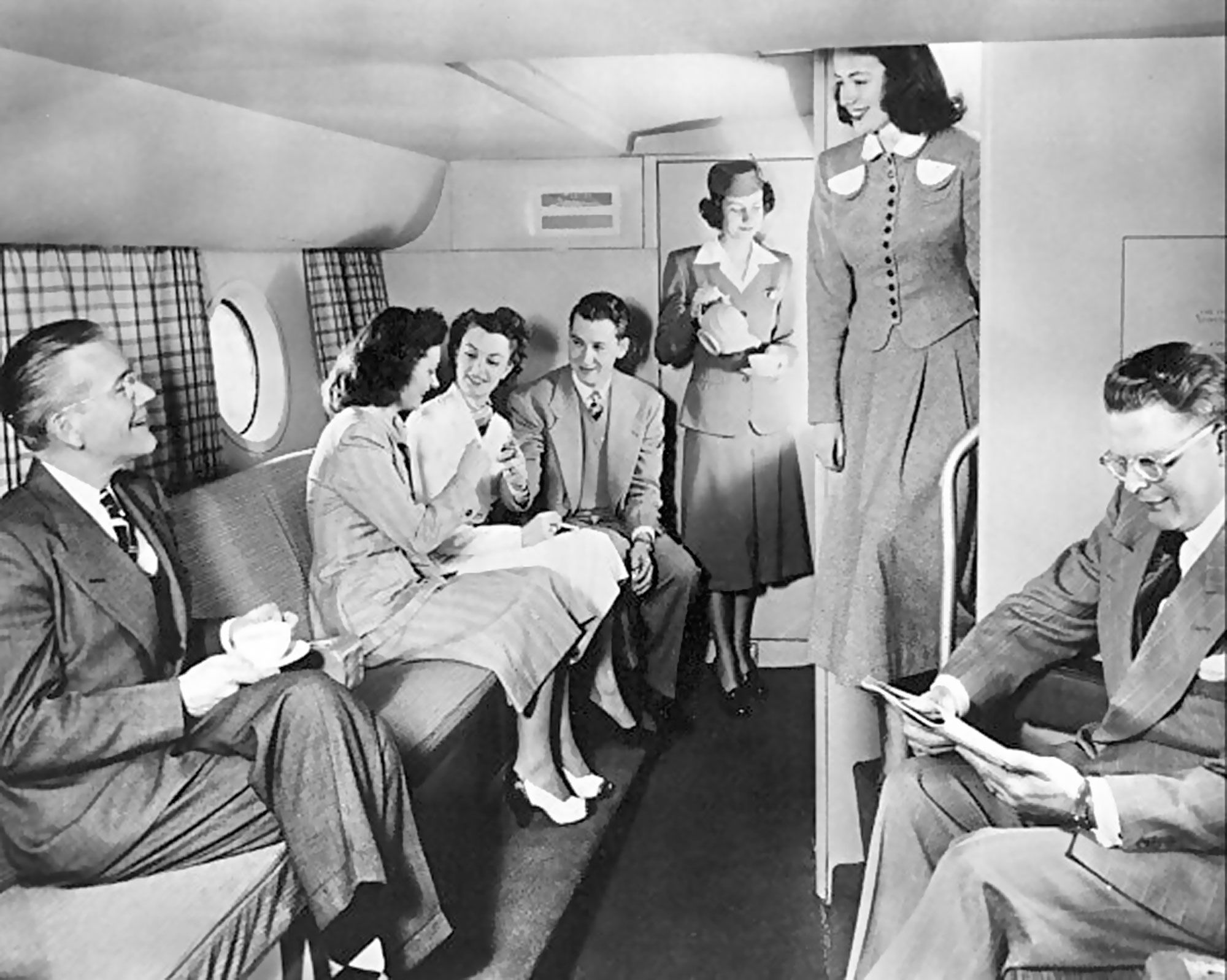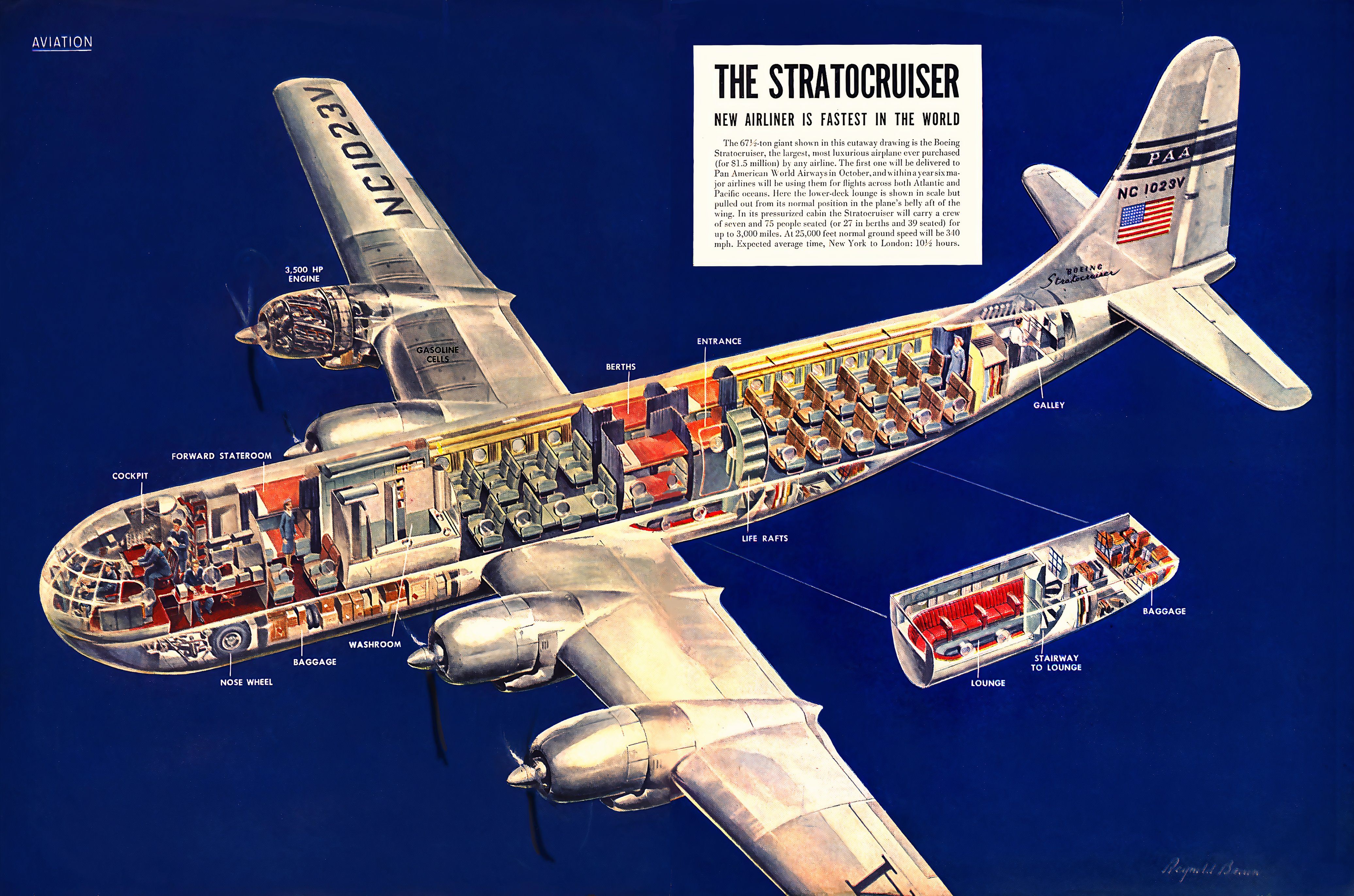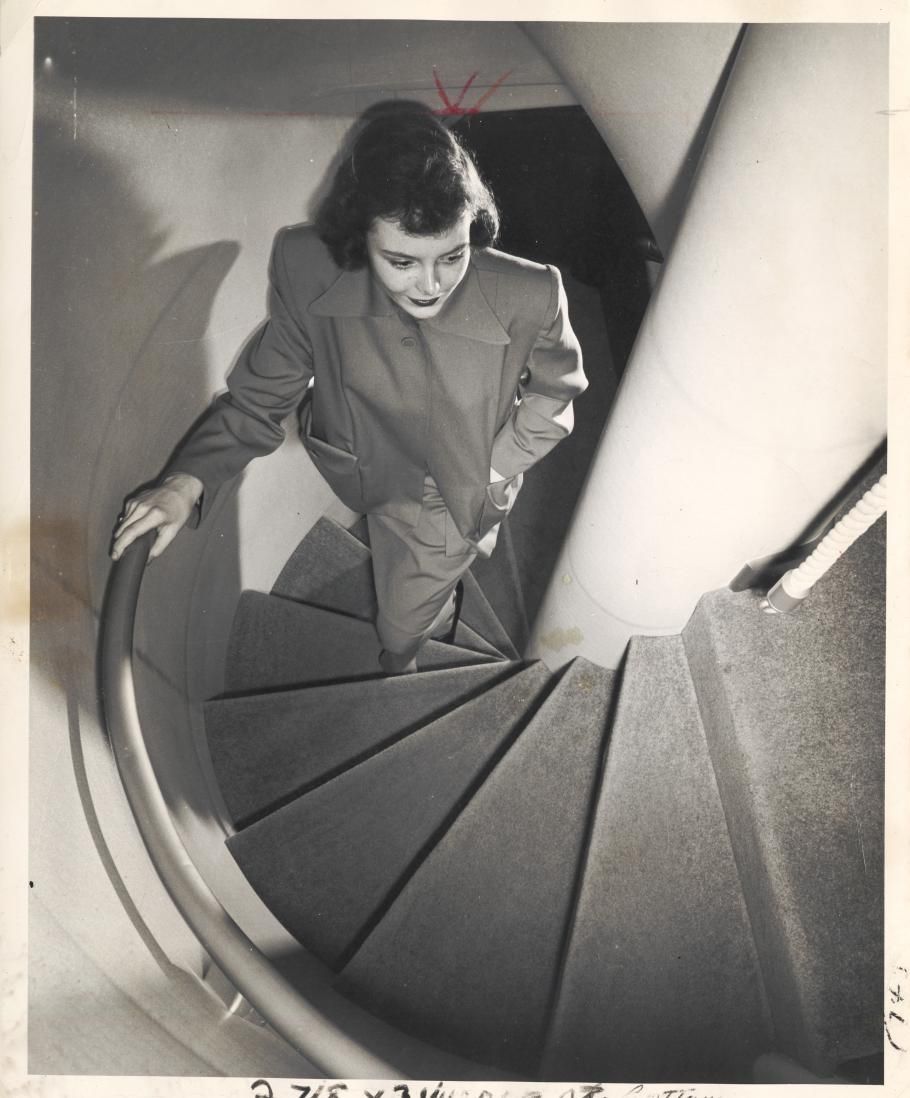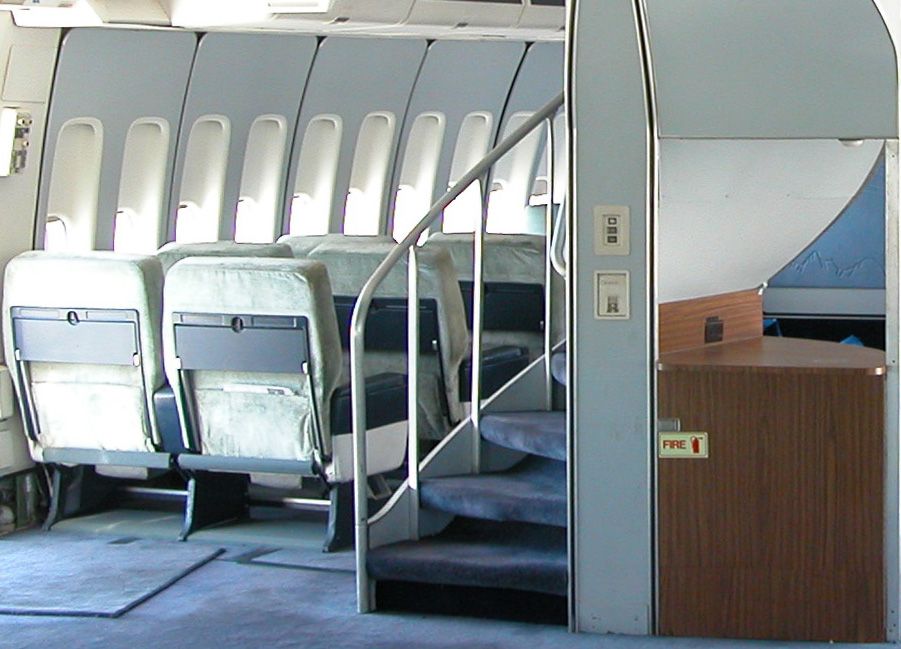Summary
- The Boeing 747-100 followed the luxurious Boeing 377 Stratocruiser, representing the Golden Age of flying.
- The elegant spiral staircase in the Boeing 747-100 epitomized the opulence and glamour of post-war commercial flying.
- Boeing 747-100’s upper deck featured luxurious lounges and bars for passengers.
Coming off the back of the luxurious Boeing 377 Stratocruiser, the luxurious Boeing 747-100 was an icon of the Gold Age of flying. Flying was still reserved for the rich and was something few could afford. The elegant spiral staircase of the early Boeing 747-100 (connecting the main cabin, lounge, and bar) epitomizes the glamor of the period.
By the time of the introduction of the Boeing 747-100 (and its spiral staircase), the age of jet travel had well and truly dawned. While flying looked nothing like the pre-war days of commercial flying with Pan Am’s Clippers and other luxury aircraft, it was still an opulent experience.
The Boeing 377 Stratocruiser predecessor
The predecessor to the Boeing 747 and its iconic spiral staircase was the Boeing 377 Stratocruiser. The Statocruiser was a large, long-range airliner developed from the C-97 Stratofrieghter (developed from the B-29 Superfortress).
|
Boeing 377 Stratocruiser |
|
|---|---|
|
Number built: |
55 (+1 prototype) |
|
Hull losses: |
13 |
|
Operated: |
1949 to 1963 |
|
Primary operator: |
Pan Am |
|
Unique feature: |
Spiral staircase leading to lower-level lounge and bar |
The Stratocruiser first flew just after World War Two in 1947 before being introduced by Pan Am in 1949. Only 56 Boeing 377s (including a prototype) were built (and these were retired by 1963). The aircraft was a novel and innovative design for its day, with two passenger decks and a pressurized cabin.
A spiral staircase connected the two decks. The Boeing 377 could carry up to 100 passengers on its main deck and another 14 in the lower deck lounge (although its typical layout was configured for significantly less). The Smithsonian states, “A unique feature of the Boeing 377 Stratocruiser was its lower-level lounge and bar, reached via a spiral staircase.”
When Boeing first built its luxurious Boeing 747-100, it replicated the spiral staircase design. As The Smithsonian states “Boeing connected the upper level of the 747 with the main cabin by a graceful spiral staircase that was based on a similar design from the Boeing 377 Stratocruiser.”
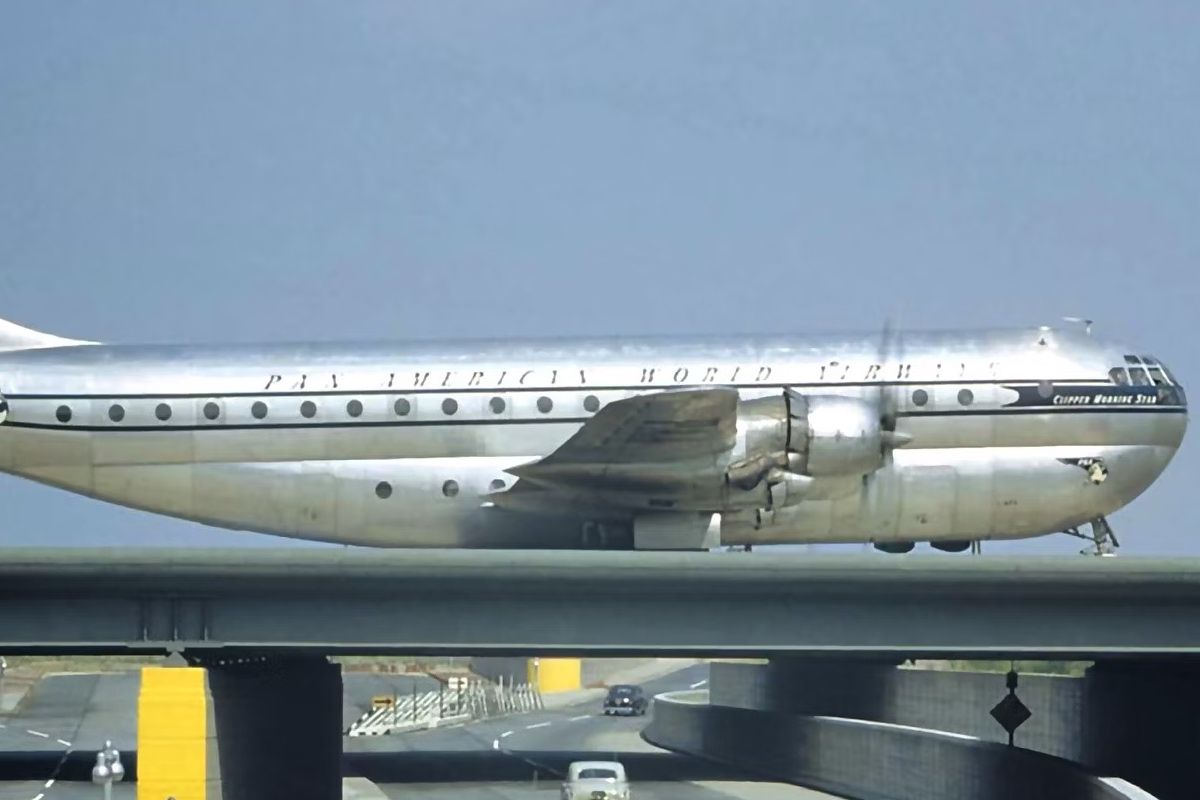
Related
Luxurious But Unreliable: The Paradox Of The Boeing 377 Stratocruiser
Why the Boeing 377 Stratocruiser was not all it seemed to be.
A very big plane
Working in the 747’s favor were the gigantic proportions of this newly developed aircraft. While its huge size presented some challenges for the aviation industry, it also presented the opportunity to kick the passenger experience up a notch. Whereas the main deck on the Statocruiser was the upper deck, the main deck on the 747-100 was the lower deck.
Seats, even in economy, were not what are seen today. While there was no inflight entertainment, passengers of the time preferred to make polite conversation with their seatmates. Seats were wide, with huge amounts of legroom and sumptuous cushions that today’s economy flier can only dream of. Back then, it was all about providing the most luxurious experience possible, with less concern for selling the maximum number of tickets.
|
Boeing 747-100 |
|
|---|---|
|
Upper deck windows: |
6 upper deck windows (three on each side) |
|
Initial upper deck use: |
Lounge space (later premium passenger seating) |
|
Engine: |
Pratt & Whitney JT9D-3A engines |
|
First flight: |
February 9, 1969 |
|
Last delivery: |
July 1986 |
Meals were served by waiting staff in white coats, with caviar and top-quality champagne the norm. Proper cutlery and flatware were offered, along with a selection of glasses depending on your tipple of choice. Fresh flowers typically adorned the cabin and the two-tier serving trolleys that would pass through the aisles. Forget an all-in-one meal tray too; dining was often three, four, or even more courses, putting today’s offerings to shame.
“A spiral staircase provided access to the upper deck of the747 jumbo jet, the most spacious and popular jetliner of all time. Still the only jet with passenger accommodations on two levels, the 747 today features a straight stairway.” – Boeing
But the real game-changer was the upper deck, frequently used by airlines as a bar/lounge where passengers could drink, smoke and network. Passengers would ascend a lavish Stratocruiser-inspired spiral staircase to access the upper deck. The spiral staircase was later replaced with a straight staircase.
Some airlines replaced the lounge later with a formal dining room, inaccessible during takeoff and landing, but available for a lavish dining experience once the plane was at cruise.
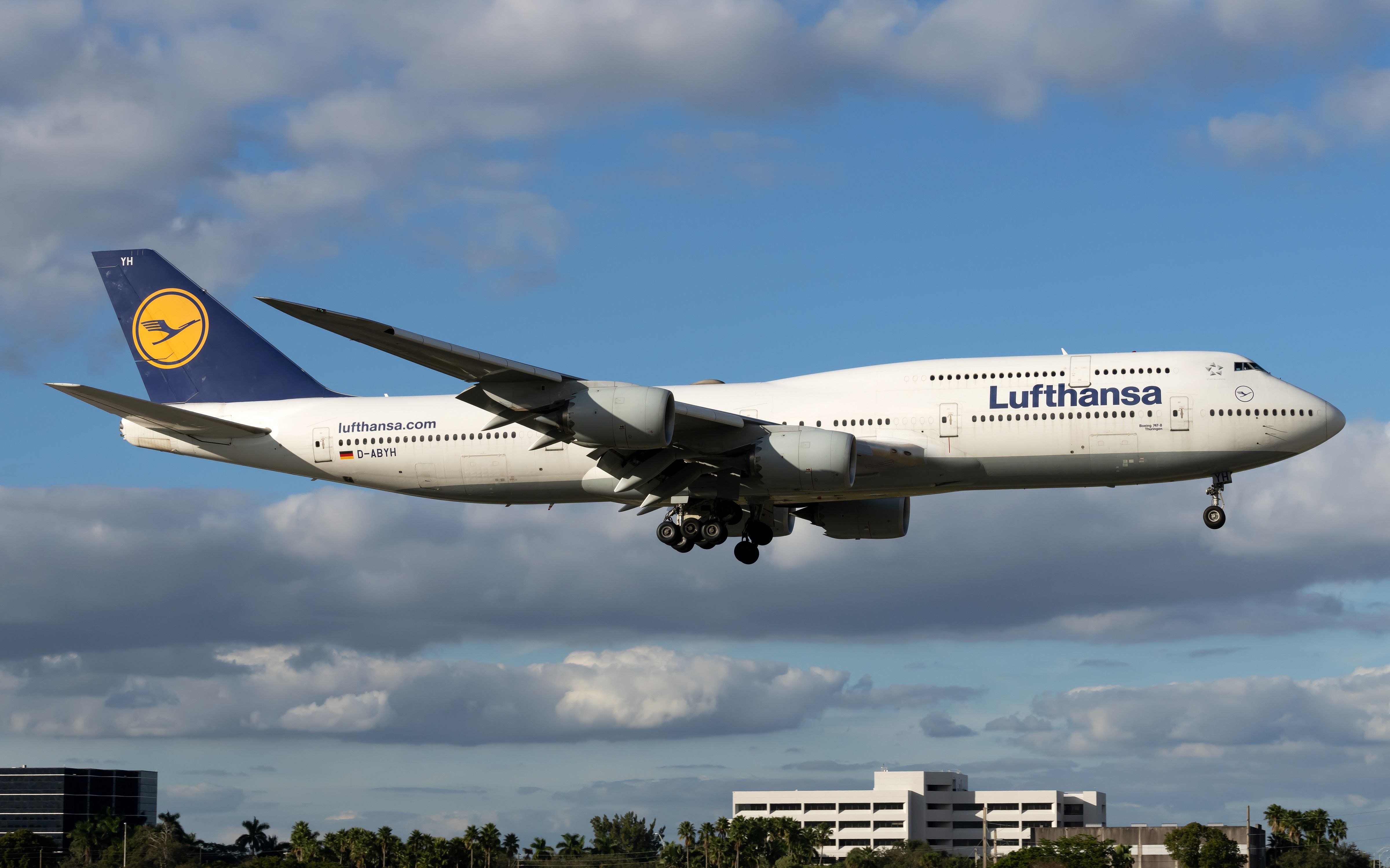
Related
The Boeing 747-100 Vs The Boeing 747-8
The 747 evolved considerably between the launches of its first and last variants.
Challenges too
The challenges of the age were as notable as the glamor of the period. For a start, cabin crew wondered how on earth they would empty 362 ashtrays in 30 minutes – something easy to forget now that in-flight smoking is universally banned.
But safety was also of concern in the ‘70s. Airliners crashed far more frequently back then than they do today, and the thought of seeing more than 300 fatalities from a single airplane accident sent shivers down the spines of the regulators. Boeing allayed their fears, claiming the 747 to be the safest airliner the world had ever seen.
Boeing lived up to its claim. In total, just 61 aircraft have been lost over the five decades of its service. Of those, only 32 resulted in loss of life – one of which was a hostage being murdered and another where a terrorist died, leaving just 29 that could be blamed on anything to do with the aircraft. The other hull losses were often older aircraft that sustained minor damage for one reason or another and were deemed beyond economical repair.

